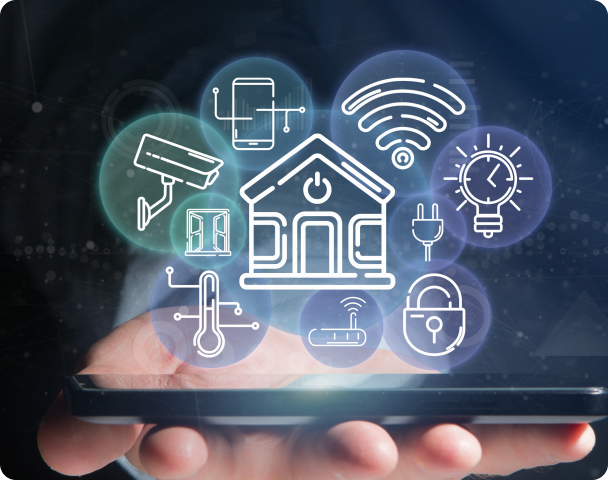Business Guide to IoT Data Analytics
As a key part of modern IoT solutions, IoT data analytics enable businesses and IoT enthusiasts to convert data collected from their devices into valuable knowledge. That knowledge may come in multiple forms, such as integrated performance metrics, direct insights into user preferences, or timely anomaly detection for remote devices. No matter the line of business, driving valuable insights from their data helps companies achieve better outcomes from their connected devices and thus improve ROI for their IoT projects.
Usually, IoT data analytics come into play after device management and monitoring are already up and running. For a large number of IoT use cases, it may even be considered redundant or used in a basic format, i.e. for setting up alerts and notifications. However, analyzing device and user data is the best way for companies to scale up their IoT projects as their digital expertise grows.
How IoT Data Analytics Helps Improve ROI for IoT Projects
So, when is the right time to think about adding analytics to your IoT project from a ROI perspective? First, if you plan to use an IoT platform, make sure it provides such a feature as a part of end-to-end IoT functionality. The biggest advantage of using the right platform is having access to an entire spectrum of IoT features, even if you don’t need all of them from the start. Some IoT technology vendors set analytics functionality aside as separate products, but it’s much better if you get it at no extra cost. Here’s why:
You will most likely need it in the near future. Having to pay for an extra module to perform data analysis may significantly change the total cost of ownership for your solution, thus jeopardising the project’s ROI. In a different scenario, you may try to avoid paying extra and go without analytics as long as possible, which may result in lost opportunities, stagnating innovation, and plateauing growth.
There are other reasons to select an IoT platform that includes data analytics from the start. IoT devices generate lots of data, and that data can be analyzed to create better workflows, faster response rates, and more precise user personalization. For example, you can use IoT to monitor live telemetry from your device sensors and report malfunctions after the fact, OR you can actually predict anomalies before they happen. That’s how IoT data analytics make the difference and increase your product’s value.
Lastly, driving value from IoT data is rather simple. There’s a number of well-known use cases that you can refer to in order to better monetize your IoT device data.
Different Types of IoT Data Analytics
Sensor data tracking is perhaps the most basic IoT solution that can be improved with data analysis. For example, you could set up thresholds for alerts so that you are instantly notified about abnormal data readings. You can also perform historical data analysis to understand trends, or conduct performance appraisals for your equipment. Even ready-made IoT products can be improved by adding custom analytics and alerts: consider a typical WiFi security camera that sends an alert to your phone when it detects motion, but becomes totally disabled if disconnected from electricity or WiFi. A cloud-based IoT solution that intelligently looks into anomalies can easily let you know about that situation in any format that you prefer.
Predictive maintenance takes analytics and alerts to a further level by using them for early detection of device malfunctions or wear and tear. This is one of the most popular IoT use cases for industrial equipment vendors and manufacturers of mission-critical devices found in healthcare, automotive, aerospace, and other sectors. It helps companies minimize physical inspection of devices, take timely actions to mitigate any anomalies, and avoid emergency downtime. Predictive maintenance usually involves constantly analyzing data from a range of sensors and cross referencing that data against the technical algorithms that describe normal equipment operation.
Prescriptive analytics builds on the previous two types of solution, but adds issue resolution assistance. This is achieved by integrating the company’s knowledge, such as device technical specs, troubleshooting guides, Q&As, etc., with IoT data analytics. As a result, the system not only detects an issue or a problem on a remote device but also reports the known ways to fix it, similar cases in the past, and recommended courses of action. Prescriptive IoT applications can dramatically improve your technical support by combining the powers of predictive maintenance, which catches early symptoms, with automated action reports, which ensure fast and accurate response. From here, you can go to an advanced field of semi-autonomous or even autonomous troubleshooting by utilizing rule engine functionality.

User behavior analytics is another cornerstone of business-oriented IoT data processing that enables companies to learn about their users’ preferences and improve their products accordingly. This can be very useful for startups that need to constantly test which way to evolve with their product or IoT cloud service. For example, a bike rental service provider can figure out the best locations for parking, or a smart gateway OEM can see which device protocols are most popular among their users and adjust their marketing message to cater to that need. User behavior analytics also sets the stage for personalized user experience.
Personalized user experiences combines user behavior analytics with flexible customization functions enabled by IoT. Personalized experience is the pinnacle of consumer IoT technology and allows every user to achieve the best value from your product. Personalization also means that you can easily augment the functionality of your product by creating new applications and cloud services rather than changing its physical parts. IoT personalization is achieved via a customizable user interface, a cloud-native architecture that allows for simple integration with a variety of third-party cloud services, and, of course, user behavior analytics. Using an advanced IoT platform like Kaa can provide you with necessary tools for analyzing and implementing personalized user experiences.
Smart meter data analytics is a specific type of user behavior analytics used to track and improve energy consumption patterns. When applicable, It can be used for reporting and analysis of your product’s energy consumption profile as well as for advanced usage optimization. On a larger scale, utility companies may tap into smart meter data reports to understand which households may shift their electricity consumption from peak hours to off-peak hours, and then encourage them to do so.
Edge analytics is one of the most advanced IoT solutions, which allows processing and analysis of IoT data on the very device that collects that data. It improves latency and speed of data processing, and reduces the load on cloud servers. Edge analytics is extremely valuable for real-time and mission-critical applications found in Industrial IoT, automotive, and other applications, which deal with vast amounts of data. With the advent of 5g and increased volumes of transferred data, edge analytics will enable IoT devices to perform essential data processing and decision making without resorting to cloud computing. However, a majority of such devices - especially IoT gateways - will use edge and cloud-based data processing in parallel depending on the actual user scenario.
Kaa Use Cases
As an end-to-end IoT platform, Kaa enables users to take advantage of modern IoT data analytics capabilities in seamless integration with other Kaa features. Until recently, IoT Analytics and Alerts features were only available for Kaa-Hosted users, but now, Kaa Cloud users can access them too, even under the free plan! These features are built on the powerful Open Distro for Elasticsearch, which is one of the best open-source enterprise-grade solutions for data analytics and visualization. It includes all the tools you may need for working with device data as well as flexible customization capabilities. For fast results, be sure to check out our introductory webinar that gives a Kaa analytics walkthrough with a real-life example.
Here are a few popular solution examples that you can achieve with Kaa:
Kaa Use Case #1: Alerts for Smart Home Devices
With Kaa, you can set up highly-customized alerts for your smart home or perimeter security devices. You can use any specific sensor data or data from multiple sensors to trigger an alert and specify the exact threshold value that you need. You can create multiple types of alert severities and use different communication channels for receiving alerts, such as SMS, email, Slack, popular messengers, etc. You can actually improve existing smart products by simply adding a flexible alert & notification system powered by Kaa analytics.
Kaa Use Case #2: Multi-Sensor Live Data Monitoring
Kaa offers great user experience for solutions featuring multiple different devices and visualizing multiple live data streams. If you need to track multiple parameters from your device sensors, or see an aggregated data from your smart farming site, Kaa will allow you to set up highly personalized dashboards for telemetry tracking and analytics, filter the most essential parameters, hide all the rest if needed, and specify logical conditions for data monitoring and visualization. Organizing work with multiple data streams is one of the strongest UX advantages of the Kaa analytics powered by Open Distro.
Kaa Use Case #3: Analyzing Equipment Performance KPIs
Kaa enables users not only to track historical data and analyze trends, but also to perform live data monitoring. One example is analyzing performance KPIs of your devices, equipment, or vehicles over a period of time. You can easily set up time ranges, display values that exceed thresholds, run comparisons, and generate basic reports. By keeping track of issues and alerts over time, you can adjust equipment maintenance and usage patterns to maximize output and ensure reliable operation. Performance analytics can be also combined with predictive maintenance in Kaa so that your operators receive timely alerts as soon as there’s any indicator of a possible malfunction.
These are just a few ideas for you to get started with but there are many more use cases for IoT data analytics that you can set up in Kaa. We encourage you to see what else you can do in Kaa for yourself and to derive maximum value from IoT device data. There’s no denying that analytics is the present and future of IoT.






